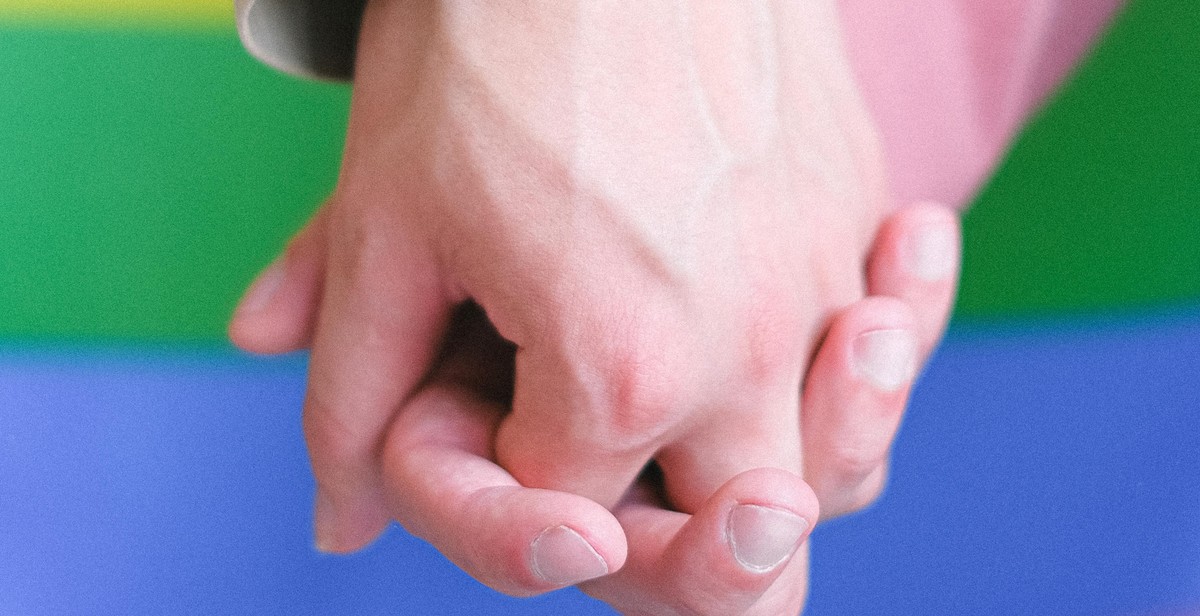Love or Domination? Decoding the Power Dynamics in Your Relationship
Love is a complex emotion that can be both empowering and debilitating. When two people come together in a relationship, power dynamics can come into play. It’s important to understand how power is distributed in your relationship and whether it’s healthy or not.
As a love and relationships psychology guru, I’ve seen firsthand how power dynamics can impact a relationship. It’s not always easy to recognize when one person is dominating the other, especially when love is involved. However, it’s crucial to understand that domination is not a sign of love.
What is Power Dynamics in a Relationship?
Power dynamics in a relationship refer to the way power is distributed between two people. It’s about who has the control and who makes the decisions. In a healthy relationship, power is shared equally, and both partners have an equal say in decisions.
However, in an unhealthy relationship, one person may dominate the other. This can lead to feelings of resentment, anger, and even abuse. It’s important to recognize the signs of an imbalanced power dynamic in your relationship and take steps to address it.
Why is it Important to Understand Power Dynamics in Your Relationship?
Understanding power dynamics in your relationship is crucial for a healthy and happy relationship. When one person dominates the other, it can lead to a toxic and abusive relationship. It’s important to recognize the signs of an unhealthy power dynamic and take steps to address it.
In this article, I’ll be sharing my personal experience and insights into power dynamics in relationships. I’ll also be providing tips on how to recognize and address an imbalanced power dynamic in your relationship.

Understanding Power Dynamics in Relationships
Power dynamics refer to the ways in which power is distributed and exercised in a relationship. It is the ability to influence or control the behavior of others. In a healthy relationship, power is shared equally, and decisions are made together. However, in an unhealthy relationship, power dynamics can become imbalanced, leading to one partner dominating the other.
Types of Power Dynamics
There are three types of power dynamics in a relationship:
- Equal Power Dynamics: In this type of power dynamic, both partners have equal say in the relationship. Decisions are made together, and power is shared equally.
- Imbalanced Power Dynamics: In this type of power dynamic, one partner has more power than the other. The dominant partner makes the majority of the decisions and controls the relationship.
- Shifting Power Dynamics: In this type of power dynamic, power shifts between partners depending on the situation. This type of power dynamic can be healthy if both partners are comfortable with the shifting power dynamic.
Signs of Unhealthy Power Dynamics
Unhealthy power dynamics can be damaging to a relationship and can lead to feelings of resentment, anger, and frustration. The following are signs of unhealthy power dynamics:
- The dominant partner makes all the decisions without considering the other partner’s opinions.
- The submissive partner feels powerless and unable to make decisions.
- The dominant partner uses intimidation, threats, or physical violence to control the submissive partner.
- The submissive partner feels afraid to express their opinions or feelings.
- The dominant partner constantly criticizes or belittles the submissive partner.
- The submissive partner feels like they are walking on eggshells around the dominant partner.
| Healthy Power Dynamics | Unhealthy Power Dynamics | |
|---|---|---|
| Power Distribution | Equal | Imbalanced |
| Decision Making | Made Together | Made by Dominant Partner |
| Communication | Open and Honest | One-Sided |
| Respect | Mutual | One-Way |

Love vs. Domination: Understanding the Power Dynamics in Your Relationship
Love and domination are two very different concepts, yet they can often be confused in a relationship. While love is about mutual respect, trust, and support, domination is about control, manipulation, and power. It’s important to understand the difference between the two and recognize the signs of each in your relationship.
What is Love?
Love is a complex emotion that involves feelings of warmth, affection, and deep attachment towards someone. It’s about caring for someone deeply and wanting to be with them through thick and thin. Love is characterized by mutual respect, trust, and support. It’s about giving and receiving equally, without any power imbalances.
What is Domination?
Domination, on the other hand, is about control and manipulation. It’s about exerting power over someone else and making them do what you want. Domination is characterized by a lack of respect for the other person’s feelings and desires. It’s about taking rather than giving, and it often involves emotional or physical abuse.
How to Differentiate Between Love and Domination
It’s not always easy to differentiate between love and domination, especially if you’re in a relationship where power dynamics are at play. Here are some signs that can help you recognize the difference:
- Mutual Respect: Love is characterized by mutual respect, while domination is about exerting control over someone else.
- Trust: Love involves trust, while domination involves manipulation and deceit.
- Support: Love is about supporting each other, while domination is about making the other person dependent on you.
- Equality: Love involves equality, while domination involves power imbalances.
- Freedom: Love allows for freedom and independence, while domination involves restrictions and limitations.
It’s important to recognize the signs of domination in a relationship and take action to address them. If you feel like you’re being dominated or controlled, it’s important to seek help and support from a trusted friend or professional.
 |
 |
| Love is about mutual respect and support | Domination is about control and manipulation |

The Effects of Power Dynamics
Power dynamics in a relationship can have both emotional and physical consequences for both partners. Understanding the effects of power dynamics can help you identify and address any issues in your own relationship.
Emotional Consequences
When one partner holds more power in a relationship, it can lead to emotional consequences such as low self-esteem, anxiety, and depression for the other partner. This can be especially true in cases where the dominant partner uses their power to control or manipulate the other partner.
On the other hand, the dominant partner may also experience negative emotions such as guilt, shame, and a sense of isolation from their partner. This can lead to a breakdown in communication and ultimately damage the relationship.
In some cases, power dynamics can lead to a cycle of abuse, where the dominant partner uses their power to control and harm the other partner. This can have long-lasting emotional effects on the victim, including trauma, PTSD, and difficulty trusting others in future relationships.
Physical Consequences
Power dynamics can also have physical consequences for both partners. In cases where the dominant partner uses physical force to control or harm the other partner, it can lead to physical injuries and long-term health problems.
Even in cases where physical force is not used, power dynamics can lead to stress-related health problems such as high blood pressure, heart disease, and digestive disorders. The victim may also engage in self-destructive behaviors such as substance abuse or self-harm as a way of coping with the stress of the relationship.
It’s important to remember that power dynamics in a relationship are not always negative. In some cases, a healthy balance of power can lead to a strong and fulfilling relationship. However, it’s important to be aware of the potential consequences of power dynamics and to address any issues as they arise.

Breaking the Cycle of Unhealthy Power Dynamics
Unhealthy power dynamics in a relationship can be difficult to recognize and even harder to break. However, it is important to break this cycle to maintain a healthy and happy relationship. Here are some steps to take to break the cycle of unhealthy power dynamics:
Recognizing the Problem
The first step in breaking the cycle of unhealthy power dynamics is recognizing the problem. This can be difficult, especially if you have been in the relationship for a long time. However, it is important to be honest with yourself and assess the dynamics of your relationship. Are you or your partner always in control or making all the decisions? Are there patterns of manipulation or coercion?
It is important to remember that unhealthy power dynamics can manifest in many ways, including emotional, physical, and financial abuse. If you suspect that you are in an abusive relationship, seek help immediately.
Communicating Effectively
Once you have recognized the problem, the next step is to communicate effectively with your partner. It is important to approach the conversation with empathy and without blame. Use “I” statements to express your feelings and concerns, and listen actively to your partner’s response.
It may be helpful to seek the assistance of a therapist or counselor to facilitate this conversation and provide a safe space for both parties to express their thoughts and feelings.
Seeking Professional Help
If communicating with your partner is not effective or if the power dynamics in your relationship are too deeply ingrained, seeking professional help may be necessary. A therapist or counselor can help you and your partner identify the root causes of the unhealthy power dynamics and develop strategies to break the cycle.
Remember, breaking the cycle of unhealthy power dynamics takes time and effort, but it is worth it to maintain a healthy and happy relationship.

Conclusion
Decoding the power dynamics in your relationship can be challenging, but it is essential to identify whether it is based on love or domination. It is crucial to understand that a healthy relationship is built on mutual respect, trust, and communication.
If you are experiencing any signs of domination in your relationship, such as controlling behavior, verbal or physical abuse, it is important to seek help immediately. Speak to a trusted friend, family member, or seek professional help from a counselor or therapist.
Remember, love is not about controlling or dominating your partner. It is about respecting and supporting each other’s choices, goals, and aspirations. A healthy relationship should make you feel happy, fulfilled, and respected.
Key Takeaways
- Power dynamics in relationships can be based on love or domination.
- A healthy relationship is built on mutual respect, trust, and communication.
- Signs of domination in a relationship include controlling behavior, verbal or physical abuse.
- Seek help immediately if you are experiencing any signs of domination in your relationship.
- A healthy relationship should make you feel happy, fulfilled, and respected.
Remember, love is not about control or domination. It is about respect, trust, and communication.
| Contact Us | Privacy Policy | Terms and Conditions |
